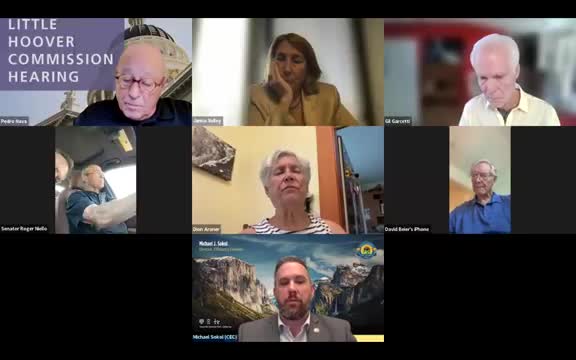Governor Newsom directs CEC to enhance California's energy efficiency programs and funding
July 26, 2025 | Little Hoover Commission, Other State Agencies, Executive, California
Thanks to Scribe from Workplace AI and Family Portal , all articles about California are free for you to enjoy throughout 2025!

This article was created by AI using a video recording of the meeting. It summarizes the key points discussed, but for full details and context, please refer to the video of the full meeting. Link to Full Meeting
The CEC's findings, published in January, confirmed that California's major energy efficiency programs continue to provide substantial savings for consumers while supporting the state's affordability and environmental goals. Among the key programs discussed were the statewide efficiency codes and standards, which have been instrumental in saving Californians over $200 billion in energy costs since their inception. The latest updates to building energy efficiency standards alone are projected to yield $4.8 billion in savings over the next 30 years.
Commissioner Hernandez raised a critical point regarding the tangible impact of these energy savings on customer bills. The CEC acknowledged the complexity of quantifying these savings, as they involve comparing current energy usage to hypothetical scenarios without the efficiency measures in place. The commission employs various forecasting and modeling techniques to estimate the overall benefits, including avoided infrastructure costs that arise from reduced demand for energy generation.
The meeting also covered several specific programs. The California Schools Healthy Air Plumbing and Efficiency (Cal SHAPE) initiative, launched during the COVID-19 pandemic, has awarded nearly $800 million in grants for improving indoor air quality and plumbing in schools. The CEC recommended that unspent funds from this program, totaling just under $200 million, be returned to ratepayers or repurposed before the program's sunset date in December 2026.
Additionally, the CEC maintains lists of approved solar and energy storage equipment, which streamline the permitting process for installations across the state. This program, costing approximately $1.3 million annually, has reportedly saved significant labor and time for utilities and local building departments.
Finally, the CEC's Electric Program Investment Charge (EPIC) program, funded by a small surcharge on electric utility customers, supports energy research and development efforts. With an annual budget of $148 million, EPIC is recognized as a leading state energy research initiative in the U.S.
In conclusion, the discussions at the Little Hoover Commission meeting underscored the importance of California's energy efficiency programs in providing financial relief to consumers while advancing environmental objectives. As the state continues to navigate its energy landscape, the outcomes of these programs will be crucial in shaping future policies and ensuring affordability for all Californians. The commission's recommendations and ongoing legislative considerations will likely influence the direction of these initiatives in the coming months.
Converted from Hearing on California Electricity Costs (Part 4) - July 24, 2025 meeting on July 26, 2025
Link to Full Meeting
Comments
View full meeting
This article is based on a recent meeting—watch the full video and explore the complete transcript for deeper insights into the discussion.
View full meeting
